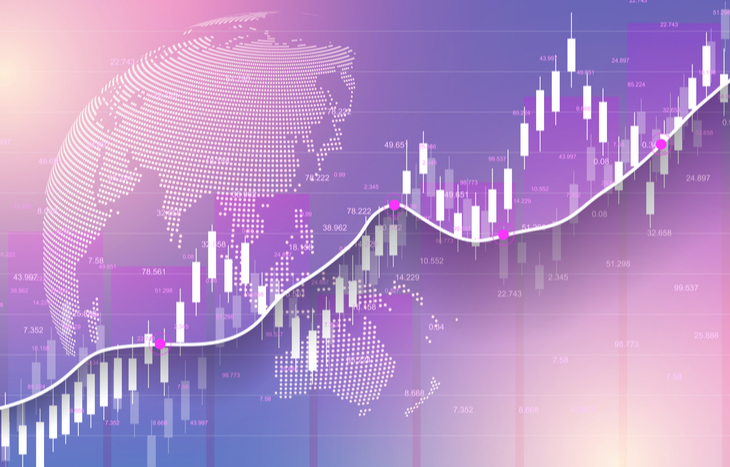What is Discretionary Trading?
Discretionary trading is for investors who want hands-on control of their trades. Traders practicing this style follow the same steps as anyone when identifying opportunities. Where they differ is in their tendency to make decisions that are outside technical analysis. A discretionary trader might decide market conditions no longer favor their thesis and take profits before their original target price, for example. Operating with discretion allows traders more control over their positions.
Discretionary traders see themselves as adaptive. They understand that even the best-laid plans can go awry when the market adjusts. Their reliance on intuition and decision-making helps them bob and weave when the market does. Instead of getting trapped in a position, discretionary traders can enter and exit based on the market’s behavior. This allows them to control risk.

A Decision-Based Trading Style
Discretionary trading is sometimes referred to as “decision trading” because that’s exactly what it is. Traders aren’t strictly relying on a system to govern their buy/sell decisions. Instead, they use a system to identify opportunities, but trade them based on market sentiments.
For example, a discretionary trader might open a position with the intent to sell after a pattern completes. However, they might see that trading volume continues to be aggressive. Instead of taking profits at their original target price, a decision trader might revise that target. In this example, a discretionary trader could reap a higher ROI from their decision—or, they could overshoot the pattern and see lower returns. It all depends on the confidence of the trader and the reaction of the market.
Some see discretionary trading as gambling. Others see it as the ability to keep pace with the market. It comes down to the technical skill and foresight of the individual trader.
Discretionary vs. Systematic Trading
Discretionary traders rely on their own decision-making. Systematic traders rely on the system they’ve developed for themselves. The key difference is in rigidity.
Systematic traders put in the work to develop a system and feel most confident using that system as a source of truth. It’s their way of staying true to their risk tolerance. With a system, they don’t need to second-guess themselves. Sure, systematic traders might miss out on larger runs, but they’ll also protect themselves from corrections.
Discretionary traders want the final word on their trades. They’re often more risk-tolerant and willing to bet on their recognition of market conditions. They tend to have more boom-and-bust trades because of their willingness to adjust their trades to real-time market conditions.
Discretionary vs. Sentiment Trading
There are elements of these two trading styles that go together. That said, they remain largely different based on their execution.
Discretionary traders will rely heavily on their interpretation of technical analysis to make decisions. Sentiment traders tend to rely on the movements of larger markets, bullish or bearish. Sentiment traders also push in the direction of the market, while discretionary traders focus on patterns. It doesn’t matter whether they’re a continuation or reversal, bullish or bearish.
Market sentiment can affect how a discretionary trader chooses to act. But their actions come from analysis of trends, rather than the trends themselves. Sentiment traders are content to trade the up or down momentum of the market, regardless of pattern.
The Benefits of Discretionary Trading
Markets are volatile and ever-changing. The ability to adapt to new factors and understand new signals makes discretionary traders more flexible than systematic traders. Instead of living or dying by a set of rules, informed traders can recontextualize their position against a new set of standards.
This adaptability opens the door to a host of benefits. For example, traders can take profits sooner or at a higher target price, or play a pattern within the context of a larger one. Discretionary traders aren’t locked into their trades and can exit them at any time based on technical signals. It’s a great way to maintain liquidity in a rapidly evolving market.
Discretionary Trading Drawbacks
Discretionary trading opens the door to a major drawback: human error. If systematic trading amounts to losses, it’s a problem with the system. If discretionary trading sees frequent losses, it’s a problem with the trader. It’s not uncommon for traders to have great technical understanding of markets, but poor instincts when trading on them.
Emotion also plays a role. Entering or exiting a position on instinct or emotion can fly in the face of technical signals. It’s important for discretionary traders to table their instincts and act on data. In fact, discretionary action rooted in emotion is gambling.
If you’re going to make decision-based trades, you also need the confidence to see them through. Second-guessing is detrimental for traders.
The Bottom Line
Discretionary trading relies on intuitive observation of the market. Evidenced-based trading is good; emotionally-driven trading is bad. Discretionary traders need to distinguish between them and act accordingly. This often means adopting an active trading mindset, as opposed to a passive one.
And you can learn more about the different types of investment strategies in play today. To sharpen your investing mind, sign up for the Investment U e-letter below!
If you’re going to be a decision-based trader, you need to have the facts—not just a feeling. For this reason, discretionary trading tends to be a more advanced tactic. Those with the time, technical understanding and foresight to evaluate their positions will make decisions that benefit their portfolio.





